 10/30/18 At the end of this article: see responses to two inquiries from readers about this research.
10/30/18 At the end of this article: see responses to two inquiries from readers about this research.
Northern N.Y.; October 15, 2018. Northern New York dairy farmers are using a whole-farm nutrient mass balance software tool to identify opportunities to improve their farmwide use of nitrogen, phosphorus and potassium. The ultimate goal is enhancing watershed and agricultural stewardship while simultaneously increasing on-farm efficiency, milk production, and crop yield.
Farms participating in the assessment of the use of the software have adjusted management practices over the last decade, resulting in an estimated 25 to 30 percent decrease in the import of nitrogen and phosphorus statewide, without a decrease in milk production.
With funding support from the farmer-driven Northern New York Agricultural Development Program, Dr. Quirine M. Ketterings, director of the Nutrient Management Spear Program at Cornell University, Ithaca, N.Y., leads the research and extension project that is using the whole-farm management approach to help farmers evaluate opportunities to reach optimal balance.

“We are working with farmers and farm advisors on whole farm nutrient mass balance assessments to help identify opportunities for better nutrient use and to document improvements over time, with the ultimate goal to be both economically viable and environmentally sustainable,” said Ketterings.
The whole-farm nutrient mass balance software tool allows farmers to compare the nutrient imports brought onto the farm in feed, fertilizer, animals and bedding with the amount of nutrients exported off the farm as milk, crops, animals, and manure. The difference is called the farm balance that can be presented as a plus or minus balance per acre of cropland or per hundredweight of milk produced.
Practices that help increase nutrient use efficiency include increasing on-farm forage production of higher quality forages; better distribution of manure on the farm’s land base; improving feedbunk management; adjusting feed rations to meet varying nutritional needs of calves, heifers, and milking cows; and other changes that result in better use of nutrients across the farm.
“A number of farms have shown tremendous progress in nutrient use efficiency over time by adjusting management practices that reduce imports such as feed and-or fertilizer, by better aligning crop and animal nutrient needs, and supplying nutrients only as needed to eliminate excesses and losses,” Ketterings said.
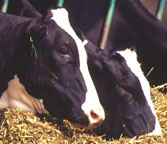 With grants from the Northern New York Agricultural Development Program and other funders, Ketterings and her team have developed feasible mass balance ranges for New York dairy operations, based on actual balances from commercial dairy farms in New York. Farms operating outside the optimal operational zone most likely have opportunities to improve their nutrient use efficiency.
With grants from the Northern New York Agricultural Development Program and other funders, Ketterings and her team have developed feasible mass balance ranges for New York dairy operations, based on actual balances from commercial dairy farms in New York. Farms operating outside the optimal operational zone most likely have opportunities to improve their nutrient use efficiency.
Farmers interested in learning more about whole-farm nutrient mass balance assessment will find information on the Nutrient Management Spear Program website at http://nmsp.cals.cornell.edu/NYOnFarmResearchPartnership/MassBalances.html. Farmers can download an input sheet to submit to Ketterings and her team for confidential review.
Funding for the Northern New York Agricultural Development Program is supported by the New York State Senate and administered by the New York State Department of Agriculture and Markets.
UPDATE 10/30/18:
Inquiry received: Can this work be applied to other types of farms?
Yes, while the software and feasible balance range is being developed for dairy farms where the main export is milk the approach applies to all farms.
Response from Dr. Quirine M. Ketterings: “The concept is equally valid for sheep, goat, beef, and even crop farms; the nutrients-per-acre value that the software provides can be used directly, but the interpretations (to reach the optimal production zone, known as the “green box” in the software charting) need to be adjusted if something else than milk is your main export. For dairy farms we use N, P, and K per acre and per hundredweight milk produced. If you were to pursue this for beef farming or for poultry, you would still want to derive the N, P, K balance per acre, but then express the production indicator on pounds (lbs) of meat sold for beef or eggs produced for layer hens, etc.
Inquiry received: Is nutrient mass balancing being done elsewhere?
Farmers in other states and around the world are increasingly interested in the evaluation of whole farm nutrient balances as key performance indicators. Dr. Ketterings notes that similar nutrient mass balance approaches have been implemented in Europe, Australia, and New Zealand, for example. Farmers in other states or countries are encouraged to check with local colleges’ agricultural or Extension programs or agricultural education organizations to learn about NMB opportunities in their area.
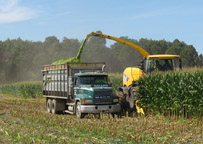

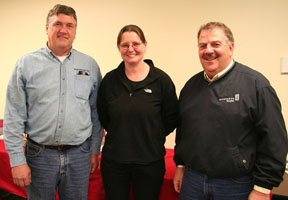
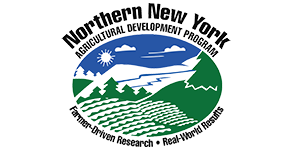 This regional research funded by the Northern New York Agricultural Development Program is part of a statewide effort.
This regional research funded by the Northern New York Agricultural Development Program is part of a statewide effort.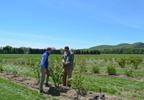
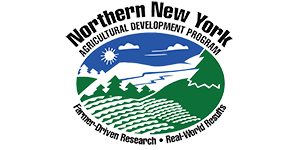 Lowville, N.Y.; September 18, 2018. The Northern New York Agricultural Development Program (NNYADP) has posted its 2019 grant application, research ideas, and guidelines on the home page at
Lowville, N.Y.; September 18, 2018. The Northern New York Agricultural Development Program (NNYADP) has posted its 2019 grant application, research ideas, and guidelines on the home page at 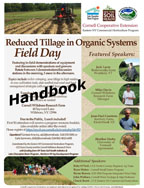 Northern N.Y.; September 17, 2018. A handbook for improving soil health in both organic and conventional vegetable, row crop, and small grain systems is now available at no charge from Cornell Cooperative Extension and partners that made possible a popular field day event that served as the basis for the handbook development.
Northern N.Y.; September 17, 2018. A handbook for improving soil health in both organic and conventional vegetable, row crop, and small grain systems is now available at no charge from Cornell Cooperative Extension and partners that made possible a popular field day event that served as the basis for the handbook development.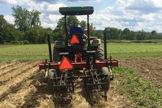
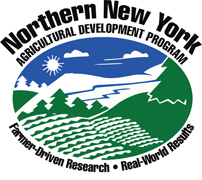 The farmer-driven Northern New York Agricultural Development Program, New York Soil Health, and Lake Champlain Basin Program sponsored the Reduced Tillage summer field day event. The Cornell Cooperative Extension (CCE) Eastern NY Commercial Horticulture Program, CCE Essex County and the Cornell University Willsboro Research Farm coordinated the field day programming.
The farmer-driven Northern New York Agricultural Development Program, New York Soil Health, and Lake Champlain Basin Program sponsored the Reduced Tillage summer field day event. The Cornell Cooperative Extension (CCE) Eastern NY Commercial Horticulture Program, CCE Essex County and the Cornell University Willsboro Research Farm coordinated the field day programming.